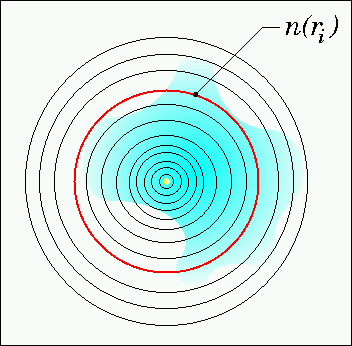|
Debris Disk Radiative Transfer Simulator Manual - Upload: Density Distribution. General Remarks. |
|
If n0(r,theta,phi) is the arbitrary (optically thin) density distribution, the radial density distribution n(r) required for the simulation of the spectral energy distribution can be derived as follows (simply averaging): 
The quantity r is the radial distance
to the illuminating star.
When providing the set of (r, n(r)) pairs, consider the following:
See here , if you plan to upload a density distribution resulting from n-particle simulations. |
